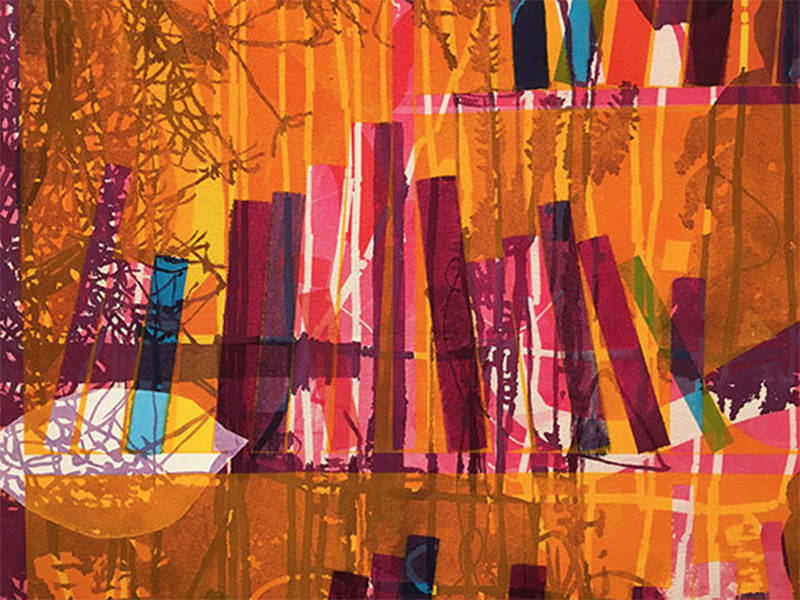
March 22, 2017
Bob Matthews @ Gregory Lind
by David M. Roth
Studio Tan, the title of Bob Matthews’ current show, tells viewers right up front that light is a primary concern. The London-based artist employs pigments that shift color when exposed to ultra-violet sources, making the act of painting a bit like fixing a photo in a chemical bath. Novel as that approach may be, his paintings are really more about space. Matthews works in layers.
He begins with ink drawings on unprimed canvas over which he applies tightly controlled stains. To these he adds stitched lines, stenciled images of foliage and architecture and imprints of coins, seedpods and book spines — all rendered as silhouettes. Set against hot pink, flaming orange and purple grounds, the effect conjured is that of tropical ruins engulfed in toxic clouds.
That said, I'd resist taking these works as environmental statements. Matthews’ interests are formal, centering primarily on how surface marks, such as hard-edged geometric lines and infinitely looser glitch effects (hand-painted, stenciled and airbrushed), can be deployed to both define (and confuse) interior and exterior space. Many such marks read as windows, but far more of them appear as semi-transparent “filters” through which positive and negative forms echo one another and appear to switch places. Warhol’s silkscreens, Donald Sultan’s flower paintings and John Baldessari’s circular blot-outs spring immediately to mind, as do photograms and the manifold possibilities afforded by digital imaging.
To the latter Matthews is no stranger. In 2002 in this space he unveiled an all-digital body of landscape paintings (Cabins and other difficulties) that – no surprise — resembled paint-by-numbers, prefiguring the sorts of things we’re seeing today from artists like Koto Ezawa and Nobuyuki Takahashi. Since then, using an array of manual methods, he’s leaned more toward the sorts of complex aggregations of shape and color seen here.
Standout examples are the three vertically oriented works (Studio Tan, Limbo, and Afterimage) that hang from the wall unstretched. Physically accessible in way that the stretched works are not, they stand as proof that minding the edges can sometimes mean leaving them permeable. And that, to paraphrase Leonard Cohen, is how we — and the light – enter Matthews’ works: sneaking in through the cracks.


